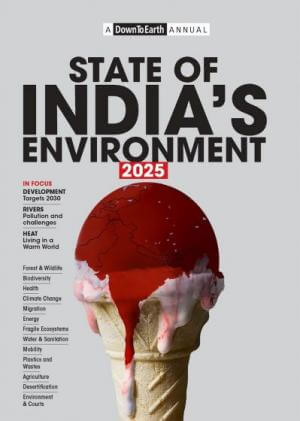State of India’s Environment: 322 days in 2024 had extreme weather

Summary
The State of India’s Environment 2025, published annually by the Delhi-based Centre for Science and Environment (CSE), shows that the decade between 2015 and 2024 was the warmest in India’s 175-year record, with 2024 alone witnessing extreme weather on 322 of 366 days – worse than in 2023. Crop loss from such events touched 4.07 million hectares, an 84 percent rise from the previous year, while 3,472 lives were lost. Minimum temperatures spiked too with 17 states reporting “warm night” conditions and parts of north India facing nights over 6.4 degree Celsius above normal. The report highlighted how air pollution continues to shorten lives – cutting national life expectancy by 3.5 years and in Delhi by over seven.
Plastic waste generation has reached a record 4.14 million tonnes in 2022-23. Groundwater remains unsustainable in states like Punjab, Haryana, and Rajasthan, while river monitoring revealed unsafe levels of heavy metals at half the stations tested –- India conducted tests at just 37 percent of its 870 river water quality monitoring stations and nearly half of the tested sites showed dangerously high concentrations of toxic heavy metals. At 38 stations across 16 rivers and their tributaries, two or more of the metals were found at elevated levels. In 11 of the 28 states and UTs, no heavy metal testing was carried out at all. The data in the report has been divided into the following categories: climate change, extreme weather events, air pollution, health, forest and biodiversity, energy, and employment.
The report can be bought here.
